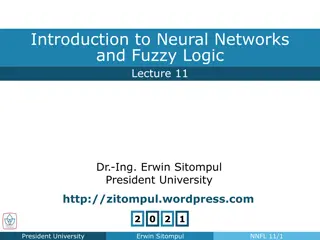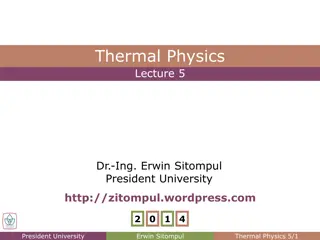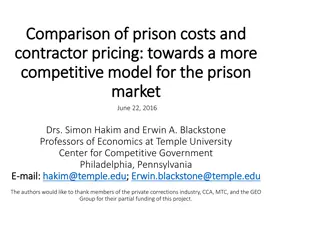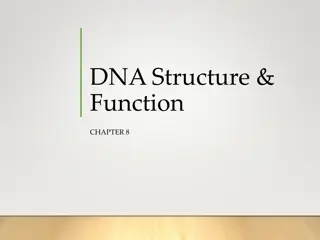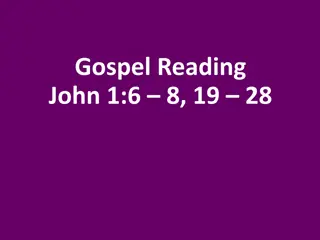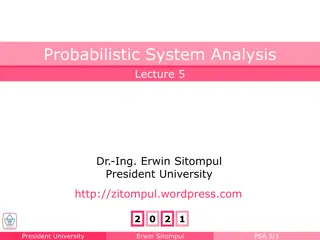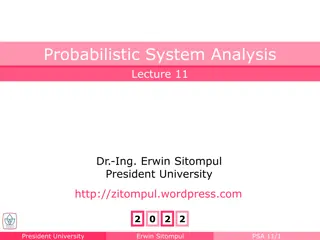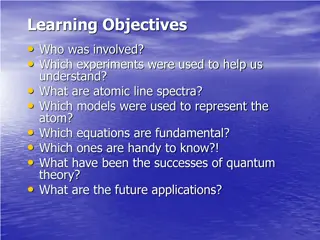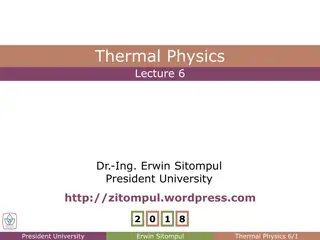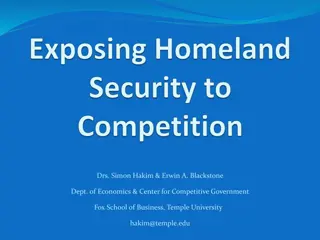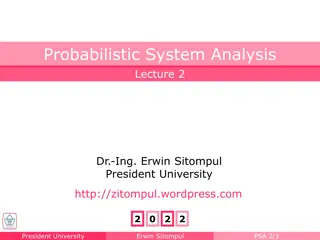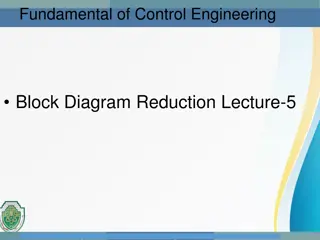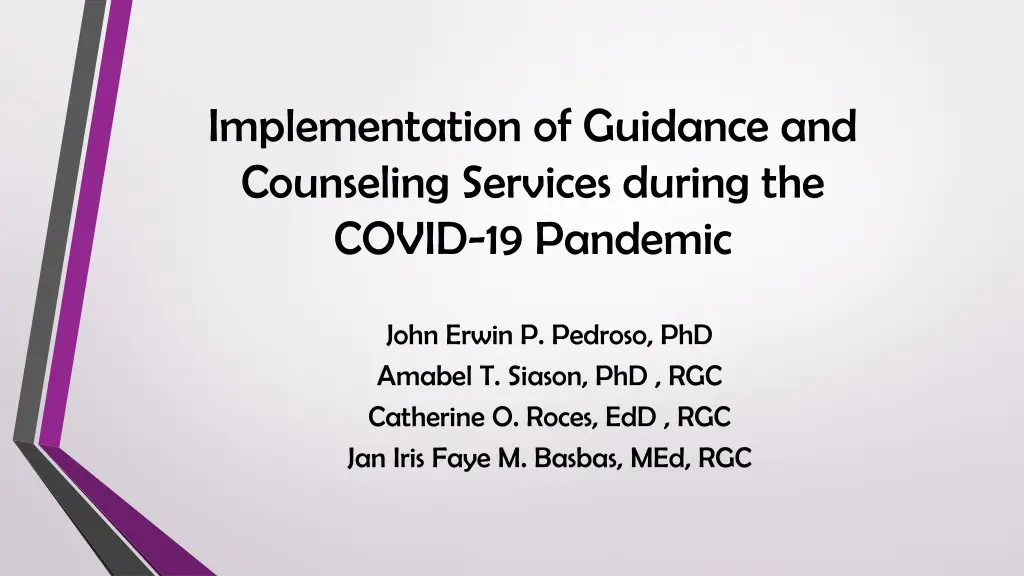
Effective Strategies for Counseling Services During COVID-19
Learn about the challenges faced by guidance counselors during the pandemic, including inadequate support and restrictions in service delivery. Discover insights and initiatives for implementing guidance and counseling services effectively.
Download Presentation

Please find below an Image/Link to download the presentation.
The content on the website is provided AS IS for your information and personal use only. It may not be sold, licensed, or shared on other websites without obtaining consent from the author. If you encounter any issues during the download, it is possible that the publisher has removed the file from their server.
You are allowed to download the files provided on this website for personal or commercial use, subject to the condition that they are used lawfully. All files are the property of their respective owners.
The content on the website is provided AS IS for your information and personal use only. It may not be sold, licensed, or shared on other websites without obtaining consent from the author.
E N D
Presentation Transcript
Implementation of Guidance and Counseling Services during the COVID-19 Pandemic John Erwin P. Pedroso, PhD Amabel T. Siason, PhD , RGC Catherine O. Roces, EdD , RGC Jan Iris Faye M. Basbas, MEd, RGC
Introduction The COVID-19 pandemic has resulted in significant changes in the education process and practices (Strear et al., 2021). It resulted to detrimental effects on students motivation for academic success and generate behavioral issues in schools (Pincus et al., 2020). The role of a guidance counselor is crucial in the education of students, and this has been amplified during the pandemic, where their role has been critical and their skills have been severely needed by students who are faced by several personal challenges (Arrieta et al,. 2021; Supriyanto et al., 2020; Mielgo-Conde et al., 2021; Ahmed & Firdous, 2020).
Qualitative Research Study five (5) guidance counselors were chosen as informants of this study purposive or selective sampling technique based on inclusion criteria was employed used a semi-structured written interview using a conventional qualitative content analysis, data were transcribed, examined, compared, and carefully categorized into several themes
RESULTS Challenges, initiatives, and insights in implementing guidance and counseling services were revealed. There were seven (7) meaningful categories taken from data transcripts.
Counselors were challenged by: (1) inadequate support, and (2) restrictions in delivering guidance and counseling services
Inadequate Support for the Delivery of Services This is divided into two subcategories namely: a. Information and Communication Technology (ICT) Facilities and Services Ann: "There was no available connection in the campus during the onset of the pandemic. There was limited ICT equipment available to carry out a new mode of service delivery. b. Stakeholders Participation Don: It was difficult to seek help and support from the community and stakeholders. Kaye: "Some parents failed to get involved in their child/children in online schooling. Thus, students seek guidance services. "
Restrictions in the Delivery of Services These restrictions are evident in the following services: a. Counseling Ann: "Face-to-face counseling was not possible during the peak of the pandemic." b. Student Activities Gill: Guidance-sponsored student development activities were restricted and put on hold. c. Testing and Inventory Gill: The pandemic restricted physical testing and inventory. d. Career Guidance Programs Kaye: It was challenging in providing career guidance program for our senior high school students. Gill: Career fairs and labor education for graduating students were restricted.
Counselor initiatives included (1) using technology-aided services (2) strengthening of school and community partnerships
The Use of Technology-Aided Services This is divided into two subcategories namely: a. Establishment of Online Platforms: website, Facebook page, and virtual conferencing platforms Gill: Instituting an official guidance website where all student development contents are properly uploaded, posted, and organized was for the convenience of students." Ann: "We created an FB page to at least reach and promote our services in the Guidance office." Gill: Virtual platforms such as Google Meet, Zoom, and Messenger enabled virtual counseling. b. the Conduct of Online Activities: webinar for students and parents, and wellness activity Ann: A Moment with the Guidance Counselor and Mental Health Webinar Kaye: Online Discussion on Study Habits, Time Management, and Self-Care were conducted. Kaye: Guiding, Supporting, and Connecting: A Webinar on Parental Engagement and Involvement in Times of the Pandemic was conducted. Don: Online Kamustahanand Online Jamming were made live in the Student Affairs Facebook Page.
The Strengthening of School and Community Partnership This includes five (5) subcategories that feature the stakeholders from the community and various institutions: a. The Local Government Unit, Parents, and Students: Ann: To involve stakeholders such as students, parents, and representatives from the Local Government Unit in planning and implementing new initiatives is important. b. Job Placement Agencies and Career Websites: Kaye: "Virtual Guidance Program and its purpose has collaborated with Job Placement Offices and JOB.180.com which provided different professional speakers for this activity. c. Alumni: Gill: College alumni were invited as guest speakers. d. Website Visitors: Gill: Website visitors were encouraged to provide feedback on how to better improve our website. e. Adopted Community: Don: The school conducted community extension service to the adopted community during the pandemic.
The two essential insights of counselors on their experience were about (6) counseling as a value-laden helping profession, and (7) efficient implementation of services.
A Value-laden Helping Profession This includes 3 important subcategories featuring prominent values identified by counselors in the implementation of guidance services: a. Resiliency: Ann: It strengthened my resiliency in addressing problems and issues. Don: "We need to adapt to the call of the current situation for us to still cater to the needs of our students." Jay: The pandemic taught us to be responsive to the current situations. b. Reflectiveness: Kaye: To reach out to our clients by offering our services as best as we could, have allowed us to think and reflect, that at the end of the day, we have done our services to those who need it. Don: Despite the pandemic, a lot of people are willing to help and give out to others. Ann: It was very challenging and risky but, it made me appreciate my humane side rather than my role as an implementer of the program. c. Ingenuity: Jay: We became more creative and resourceful to ensure that students keep on learning. Gill: The establishment of an online request system is a good innovation for paperless transactions.
Efficient Implementation of Services This includes four (4) subcategories that resulted from the counselors realizations: a. Information Dissemination: Kaye: We need to advertise our programs and services for our clients to be aware of and eventually seek our assistance when they need it." b. Exhausting Possibilities: Kaye: If one way will or technique will not work, another one might help. c. Investment in Resources: Gill: Capital investment should be made in better equipment like gadgets, reliable connectivity, and skills development for guidance counselors to sustain the initiatives. d. Stakeholders Involvement: Kaye: Successful implementation of any program would require the assistance of groups and people concerned.
The COVID-19 pandemic highlighted the important role of Guidance Counselors of providing different guidance and counseling services. Counselors face both personal and professional challenges. Amidst the many restrictions and inadequate support in the delivery of guidance and counseling services, they take their role by heart in implementing initiatives that serve different stakeholders. They go beyond their usual ways in implementing services through using technology-aided gadgets and online platforms to address various needs not only of students, but also of teachers, families, and the community as a whole. Stakeholders' participation in the implementation of services helped counselors in strengthening school and community partnerships. Guidance counselors' values grounded them in selfless service to their different clienteles. Guidance and counseling is not only a profession but also a vocation.

